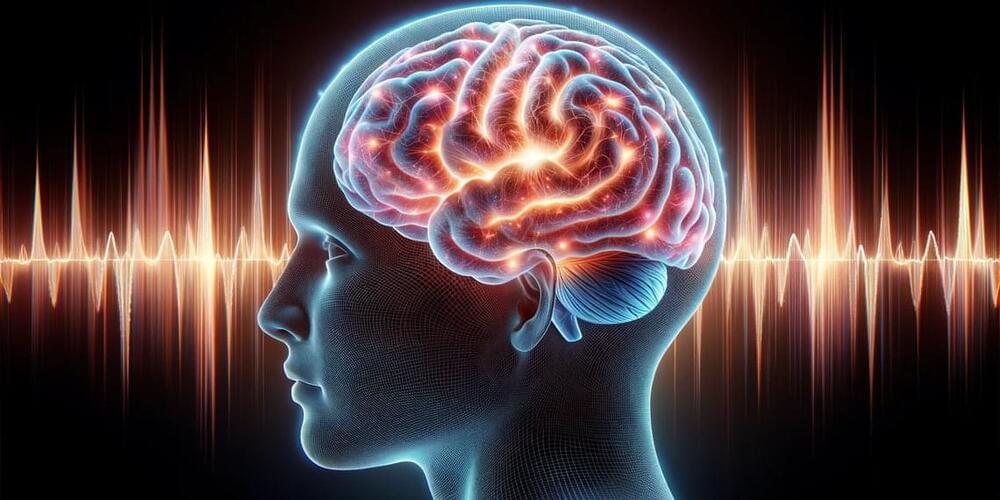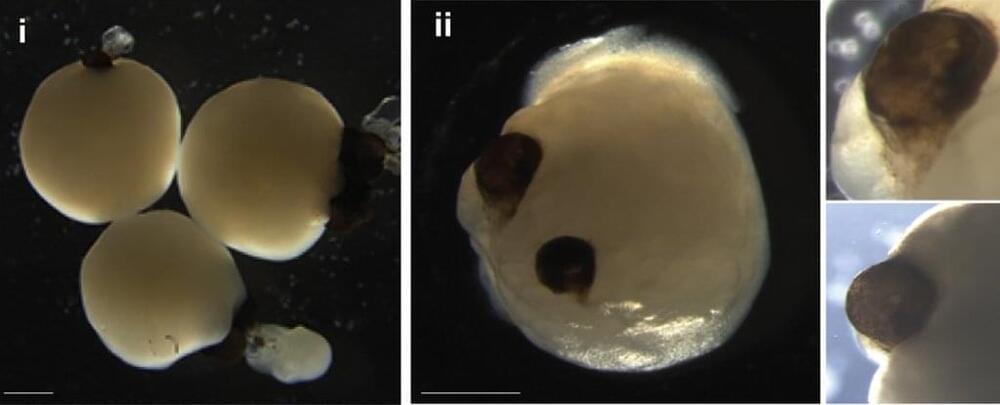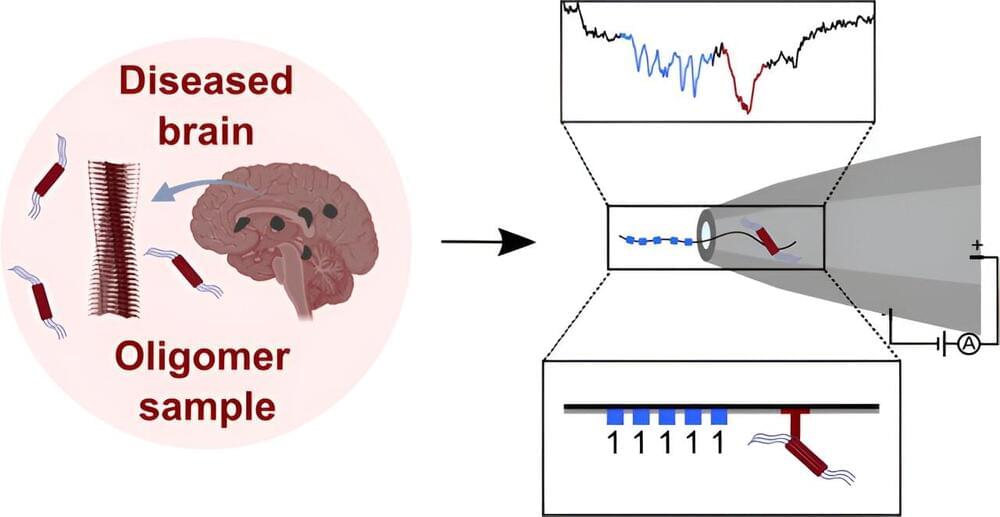Archive for the ‘neuroscience’ category: Page 181
Dec 13, 2023
Weight Loss through Slimming found to Significantly Alter Microbiome and Brain Activity
Posted by Natalie Chan in categories: biotech/medical, food, health, neuroscience
Worldwide, more than one billion people are obese. Obesity is a risk factor for cardiovascular disease, diabetes, and some cancers. But permanently losing weight isn’t easy: complex interactions between body systems such as gut physiology, hormones, and the brain are known to work against it. One method for weight loss is intermittent energy restriction (IER), where days of relative fasting alternate with days of eating normally.
“Here we show that an IER diet changes the human brain-gut-microbiome axis. The observed changes in the gut microbiome and in the activity in addition-related brain regions during and after weight loss are highly dynamic and coupled over time,” said last author Dr. Qiang Zeng, a researcher at the Health Management Institute of the PLA General Hospital in Beijing. The study has been published in Frontiers in Cellular and Infection Microbiology.
The authors used metagenomics on stool samples, blood measurements, and functional magnetic resonance imaging (fMRI) to study changes in the composition of the gut microbiome, physiological parameters and serum composition, and brain activity in 25 obese Chinese women and men on an IER diet. Participants were on average 27 years old, with a BMI between 28 and 45.
Dec 13, 2023
Disease Progression Independent of Relapse Activity vs. Relapse-Associated Worsening in Patients with Pediatric-Onset Multiple Sclerosis
Posted by Shubham Ghosh Roy in categories: biotech/medical, neuroscience
Progression independent of relapse activity (PIRA) has been increasingly recognized in people with multiple sclerosis (MS; NEJM JW Neurol May 24 2022 and JAMA Neurol 2022; 79:682). To learn more about PIRA, investigators used data from the Italian MS Register on 16,130 patients with relapsing-remitting MS, including 1,383 with pediatric-onset MS (POMS; median age at onset, 16), 14,113 with adult-onset MS (AOMS; median age at onset, 29), and 634 with late-onset MS (LOMS; median age at onset, 52).
Compared with patients with POMS, patients with LOMS had the highest incidence of PIRA (hazard ratio
, 2.98), followed by those with AOMS (HR, 1.42). Compared with the POMS patient group, the LOMS patient group had the lowest risk for relapse-associated worsening (HR, 0.69), followed by the AOMS group (HR, 0.88). Cumulative PIRA incidence was 1.3% of patients at age 20 years, increased rapidly between ages 21 and 30 (9%), and rose progressively from 40 to 70 (from 22% to 79%). Cumulative incidence of relapse-associated worsening showed a different pattern of increases over time (e.g., 0.5% at age 20; 7.8% at age 40; 14.4% at age 50; 24.1% at age 60; 27.7% at age 70).
These authors provide data supporting the notion that MS pathophysiology is different between patients with PIRA and those with relapse-associated worsening. While relapse-associated worsening seems to increase gradually and reach a plateau, PIRA begins in the 20s and continues to increase. PIRA encompasses accumulating neurodegenerative processes, supporting the concept that a subset of patients experience progression even within the relapsing-remitting phase of the disease.
Dec 12, 2023
Childhood Cat Exposure Once Again Linked to Schizophrenia
Posted by Shubham Ghosh Roy in categories: biotech/medical, neuroscience
People may be more than two times likelier to develop schizophrenia-related disorders if they owned cats during childhood than if they didn’t:
Living with cats as a child has once again been linked to mental health disorders, because our furry friends apparently can’t catch a break.
In a new meta-analysis published in the journal Schizophrenia Bulletin, Australian researchers identified 17 studies between 1980 and 2023 that seemed to associate cat ownership in childhood with schizophrenia-related disorders — a sample size narrowed down from a whopping 1,915 studies that dealt with cats during that 43-year time period.
Continue reading “Childhood Cat Exposure Once Again Linked to Schizophrenia” »
Dec 12, 2023
New brain-computer interface allows people to play a game using their thoughts
Posted by Quinn Sena in categories: biotech/medical, computing, cyborgs, neuroscience
😀 Amazing breakthrough face_with_colon_three
A group of Spanish researchers have developed a brain-computer interface based on electroencephalograms that allowed a group of 22 users to play a simple multiplayer game. The interface was 94% accurate in translating players’ thoughts into game moves, with each move taking just over 5 seconds. The study was published in Frontiers in Human Neuroscience.
A brain-computer interface is a technology that enables direct communication between the human brain and external devices, such as computers or prosthetic limbs. Brain-computer interfaces work by detecting and interpreting neural signals, typically through electrodes placed on the user’s head. These signals are then translated into actionable commands, allowing individuals to control computers, devices, or applications using their thoughts.
Continue reading “New brain-computer interface allows people to play a game using their thoughts” »
Dec 12, 2023
Combining brain-computer interfaces and multiplayer video games: an application based on c-VEPs
Posted by Quinn Sena in categories: computing, entertainment, neuroscience
Introduction and objective: Video games are crucial to the entertainment industry, nonetheless they can be challenging to access for those with severe motor disabilities. Brain-computer interfaces (BCI) systems have the potential to help these individuals by allowing them to control video games using their brain signals. Furthermore, multiplayer BCI-based video games may provide valuable insights into how competitiveness or motivation affects the control of these interfaces. Despite the recent advancement in the development of code-modulated visual evoked potentials (c-VEPs) as control signals for high-performance BCIs, to the best of our knowledge, no studies have been conducted to develop a BCI-driven video game utilizing c-VEPs. However, c-VEPs could enhance user experience as an alternative method. Thus, the main goal of this work was to design, develop, and evaluate a version of the well-known ‘Connect 4’ video game using a c-VEP-based BCI, allowing 2 users to compete by aligning 4 same-colored coins vertically, horizontally or diagonally.
Methods: The proposed application consists of a multiplayer video game controlled by a real-time BCI system processing 2 electroencephalograms (EEGs) sequentially. To detect user intention, columns in which the coin can be placed was encoded with shifted versions of a pseudorandom binary code, following a traditional circular shifting c-VEP paradigm. To analyze the usability of our application, the experimental protocol comprised an evaluation session by 22 healthy users. Firstly, each user had to perform individual tasks. Afterward, users were matched and the application was used in competitive mode. This was done to assess the accuracy and speed of selection. On the other hand, qualitative data on satisfaction and usability were collected through questionnaires.
Results: The average accuracy achieved was 93.74% ± 1.71%, using 5.25 seconds per selection. The questionnaires showed that users felt a minimal workload. Likewise, high satisfaction values were obtained, highlighting that the application was intuitive and responds quickly and smoothly.
Dec 12, 2023
NAD+ Boosting Molecule Protects Mice from Hearing Loss
Posted by Quinn Sena in category: neuroscience
Scientists find injecting mice with NAD+ booster protects against hearing loss through the activation of SIRT3, a protein that prevents damage to nerve connections between the ear and the brain.
Dec 12, 2023
Scientists Grew ‘Mini Brains’ From Stem Cells. Then, The Brains Sort-of Developed Eyes
Posted by Paul Battista in categories: biotech/medical, neuroscience
Mini brains grown in a lab from stem cells spontaneously developed rudimentary eye structures, scientists reported in a fascinating paper in 2021.
On tiny, human-derived brain organoids grown in dishes, two bilaterally symmetrical optic cups were seen to grow, mirroring the development of eye structures in human embryos.
This incredible result will help us to better understand the process of eye differentiation and development, as well as eye diseases.
Dec 12, 2023
Using solid-state nanopores and DNA barcoding to identify misfolded proteins in neurodegenerative disorders
Posted by Paul Battista in categories: biotech/medical, chemistry, nanotechnology, neuroscience
A team of chemists, microbiologists and physicists at the University of Cambridge in the U.K. has developed a way to use solid-state nanopores and multiplexed DNA barcoding to identify misfolded proteins such as those involved in neurodegenerative disorders in blood samples. In their study, reported in the Journal of the American Chemical Society, the group used multiplexed DNA barcoding techniques to overcome problems with nanopore filtering techniques for isolating harmful oligomers.
Prior research has shown that the presence of harmful oligomers in the brain can lead to misfolding of proteins associated with neurodegenerative diseases such as Parkinson’s and Alzheimer’s disease. Medical researchers have been looking for a way to detect them in the blood as a way to diagnose neurodegenerative disease and to track the progression once it has been confirmed.
Unfortunately, finding them in complex mixtures such as blood has proven to be a daunting task. One approach has shown promise—using nanopore sensors—but to date, they cannot track target oligomers as they speed through customizable solid-state nanopore sensors. In this new effort, the research team overcame this problem by using customizable DNA nanostructures.
Dec 12, 2023
‘Biocomputer’ combines lab-grown brain tissue with electronic hardware
Posted by Paul Battista in categories: biotech/medical, neuroscience
A system that integrates brain cells into a hybrid machine can carry out tasks such as voice recognition.


















